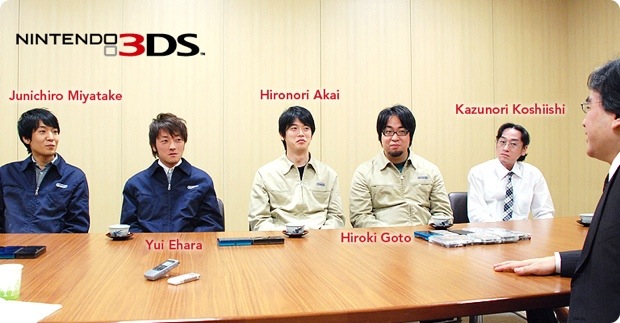
When I first saw the 3DS six months ago, and even later when I saw the official pictures, I pretty much just thought of the 3DS as a slightly chunkier DS. But of course the people in charge of designing it know better than that, and when you’re making a device that will be held for hundreds of hours by tens of millions of people… every little thing counts.
Nintendo’s president, Satoru Iwata, whom I see oftener than I see some members of my family these days, interviewed the design team for the 3DS, talking about what the hard decisions were, what came down from above, what their ideas were, and so on.

It’s actually quite interesting — I like these little peeks behind the veil, like when you get to see the original sketches of the Pac-Man maze and stuff like that. They don’t shy at details, and it’s nice to hear how hands-on Iwata himself was in the process as well:
Iwata:The reverse taper was designed so the system would be easy to open, but if something hit it, all the force would hit one place, so it had a drawback when it came to durability against impact from dropping.
Akai:Right.
Ehara:I thought the shape might have to change.
Iwata:You talked about that during the second presentation.
Ehara:Yes.
Akai:But we didn’t want to change the design, so we searched for a stronger synthetic resin.
Iwata:You instinctively knew that you couldn’t produce that design unless you found a stronger material.
Akai:Yes. Looking for a new material was the first thing I did after moving to the Research & Engineering Department.
Iwata:And what did you come up with?Akai:A material Nintendo has never used before. A type of high rigidity nylon with glass fiber in it. It’s stronger than other more common resins, but less suited to mass production.
Iwata:It does sound like it would be difficult to shape.
Akai:It is. You fill the metal mold7 with the resin to shape it, but it’s tough because of the glass fiber in it. As you repeat the process, the mold begins to wear, so we were concerned the lifespan of the mass production equipments would be shortened.
So if you end up buying a 3DS, you can be sure it was designed with love and care, and for keeps.
Read the full interview over at Nintendo.
[via 1up and Siliconera]